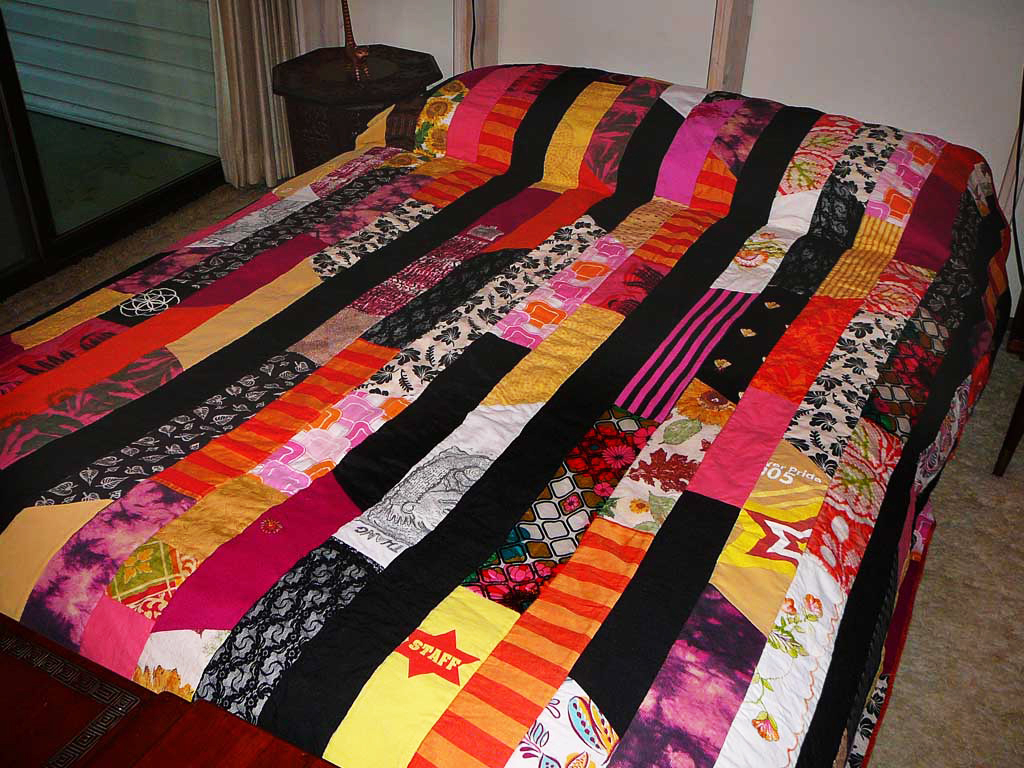Quilt design and photography by Heather Cameron.
Heather Cameron apologizes. Her spectacular patchwork quilt was not composed entirely from objects in roadside dumpsters — she supplemented with secondhand clothing from Swap-O-Rama-Rama, a semiannual event she produces in Vancouver, British Columbia, where she lives.
A seasoned reuse artist, Cameron often challenges her own high standards. Her intention for this project was not just to re-create a historical work in modern form; she wanted to experience the process of the patchwork quilters who inspired her.
Cameron was inspired by the Japanese quilting method yosegire, which means “to sew together.” As a patchwork style, yosegire originated in the 16th century, but the premise of using scrap-made garments of seamed-together bits dates back long before that. Legend has it that the Buddha, who lived in the 6th century B.C., instructed his followers to wear patchwork garments patterned like the rice fields of India, assembled from discarded rags. The idea resonates with Buddhist teachings about the interconnectedness of all beings.
Cameron compares the history of the yosegire to the work of the women of Gee’s Bend, Ala. Living below poverty level in an isolated African-American hamlet, these women craft scraps into ornate, abstract quilts. Necessity opens a portal from which unbounded and organic, fresh designs emerge.
“I’m drawn to the abject, the discarded, and the idea of restoration and redemption,” Cameron says. “The Buddhist concept of yosegire exemplifies making something out of nothing, while the quilters of Gee’s Bend work with what’s too worn to be used anymore.”
Cameron decided to take advantage of Vancouver’s 2007 garbage strike and the growing piles of trash that lined her street. She gathered whatever clothing crossed her path, opting for those that were, for the upper classes, the least appealing — polyester stretch pants, an XL black lace negligee, and a chef’s apron — as textiles that symbolize a range of labor and class. She also used pieces from her Swap-O-Rama-Rama.
After laundering and cutting out stains, Cameron innovated ways to combine different textiles such as knits and weaves. The project became a field of color and texture. One might liken it to the Buddha’s vision of the fields of India, though Cameron, colored by the culture of her modern time, observes that her field resembles licorice allsorts candy.
Cameron believes in the living thread she participates in, one of nondifferentiation of the self and other, of opening one’s consciousness to all the world. As the Sufi sage Hazrat Inayat Khan aptly said, “Liking comes from knowledge and dislike from ignorance.”
















